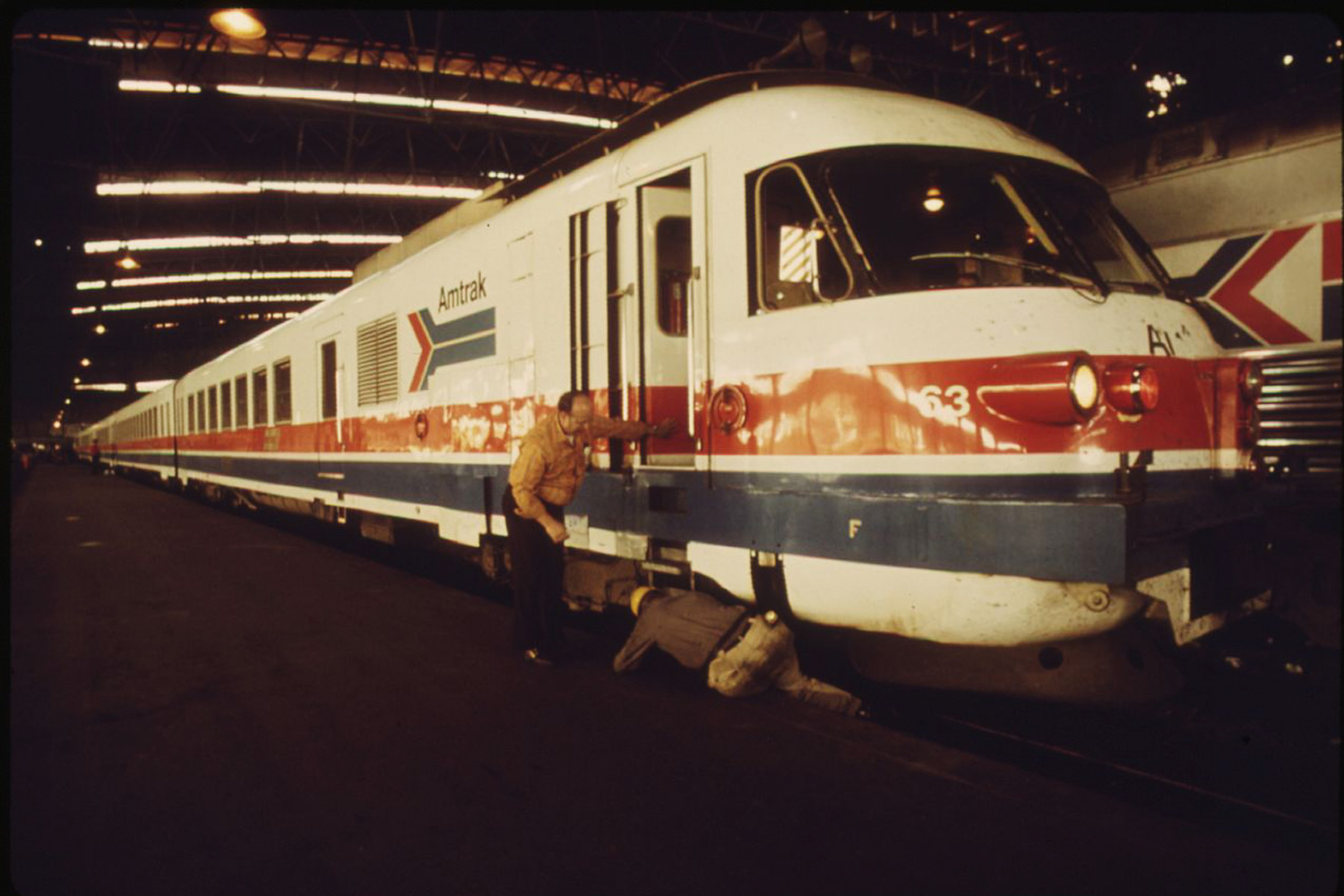In 1972—40 years before Amtrak would celebrate the coming of 110-mile-an-hour, moderately high-speed rail from Chicago to St. Louis—the Chicago Tribune hailed a wonderful new technology scheduled to start rolling out of the city: the glorious new Amtrak TurboTrain.
Given a chance, the turbine trains should be able to impress us right out of our old habits. They have reached speeds of 100 miles an hour in regular service [the 170 figure was registered in a test]. If they average 70, they can go to downtown Milwaukee faster than nearly all of us can get there by car…. On relatively short distances between big cities like these, Amtrak is in a good position to relieve pressure on airports without adding congestion to the highways.
[snip]
The American people have said in opinion polls that they deem the passenger train essential to ease the travel jams looming in our prosperous future. The new service here will challenge us to prove we mean what we have said.
Five years before, the TurboTrain was born in Chicago at the Pullman Works, under contract with United Aircraft Corporation, using a gas turbine engine usually found in turboprop aircraft (or race cars). On a test run the train hit 170 miles an hour, faster than what were then the fastest Japanese electric trains.

The next year, the travel jams and our prosperous future were imperiled by the 1973 oil crisis. Ironically, it also killed the TurboTrain, the country's last attempt at high-speed rail for decades.
At the same time, the French government was facing a similar dilemma as the United States. Car ownership more than doubled from 1951 to 1958; the government began planning a superhighway system; and passenger rail was in decline. And French engineers started up on identical technology: the first TGV prototype, commissioned a year after the TurboTrain and completed in 1972 after the TurboTrain had begun limited, experimental use, was the turbotrain à grande vitesse. Like the American TurboTrain, it was tremendously fast; a prototype model reached speeds of 300 kilometers per hour (186 mph).

And it was developed just a bit later than the American version—a delayed timeframe that may have made the difference between a failed experiment with high-speed rail and a now-robust system that boasts some of the fastest operating speeds in the world, succeeded only recently by China. The turbine engine was inefficient at low speeds, which wasn't a problem until the oil crisis. Between late 1973 and early 1974, the price of oil quadrupled, and the French made the decision to redesign the TGV to run on electricity, committing to a full infrastructural upgrade that would lessen their dependence on foreign oil.
But in October of 1973, when OPEC hiked the price of crude and embargoed exports to the U.S., the new Amtrak Turboliner (now using French technology that the French were already moving away from) began twice-daily service to Milwauke and St. Louis. The trip to the latter took five hours at a high speed of 80 miles an hour—about 25 minutes more than Amtrak is aiming for by 2017 on the same route.

The Turboliner slowly trickled out of use, their jet-fueled engines needlessly expensive for infrastructure that couldn't support their highest speeds, until they were given one last hopeless shot at life in the late 1990s by New York governor George Pataki. Amtrak and NYDOT resurrected the mothballed old Turboliners in yet another half-assed attempt at high-speed rail. It went about as well as it had before, for similar reasons:
But today, the program is caught in a downward spiral of cost overruns, poor planning, Amtrak's financial problems and plain bad luck. Only three trains out of the seven slated for the service have been delivered by the manufacturer, and they have never reached their promised speed because almost none of the needed track improvements have been completed.
[snip]
In truth, the program ran into serious problems almost from the start. Some railroad experts questioned the decision to revamp older trains for the service, instead of buying new equipment. Using electric trains was not an option, even though they travel much faster than diesel trains, because of the cost of building the needed infrastructure along the route.
With that, the age of the TurboTrain came to an end, sold for $425,000 in scrap.



